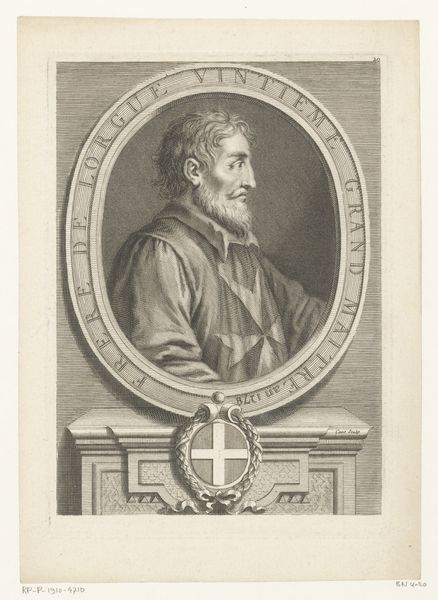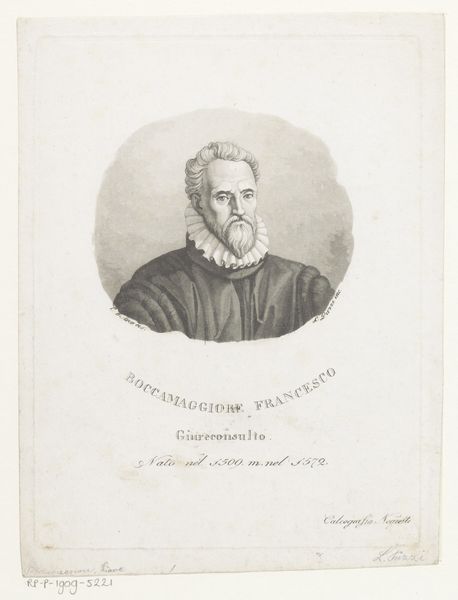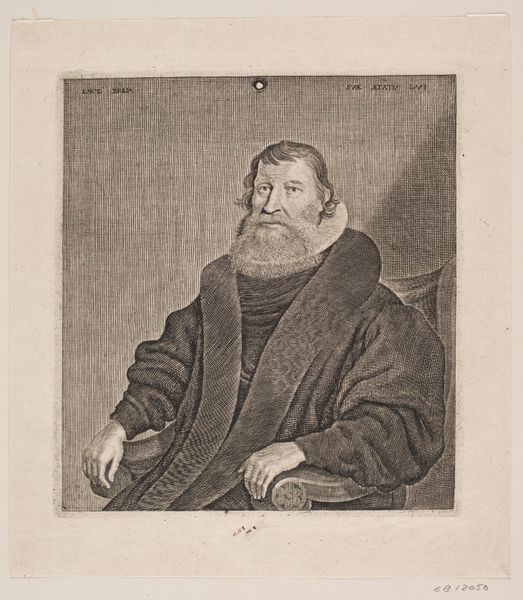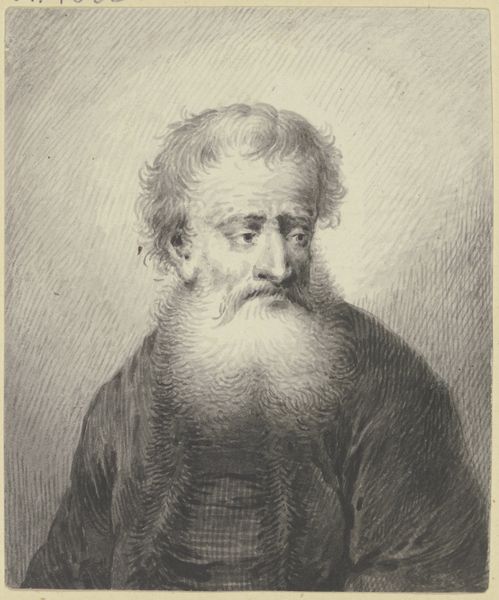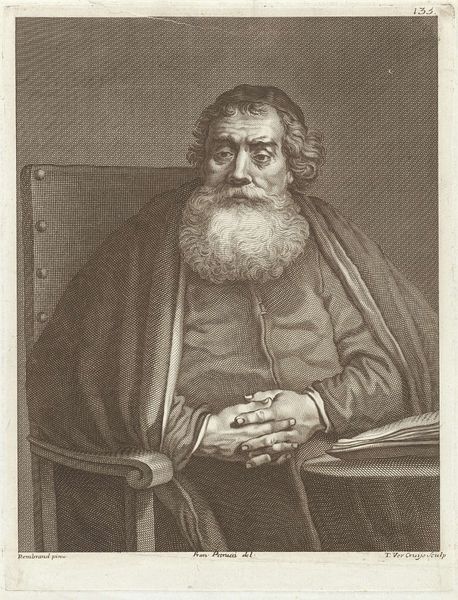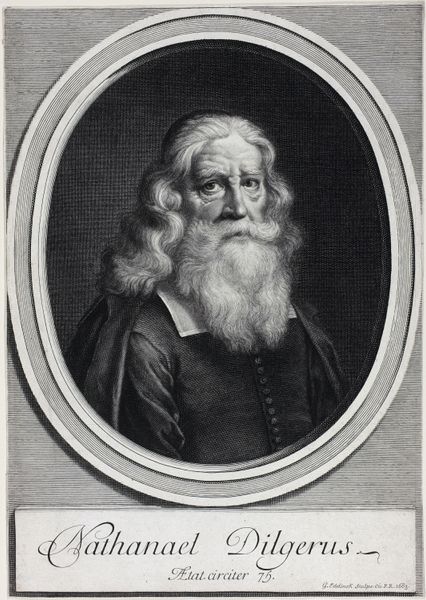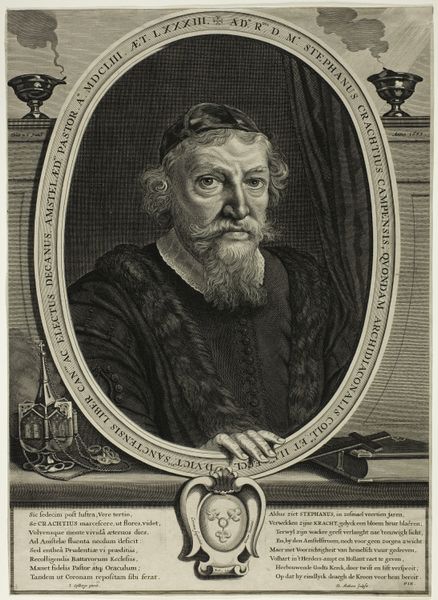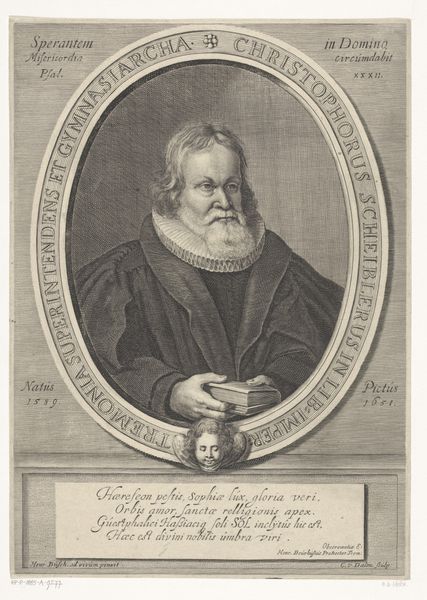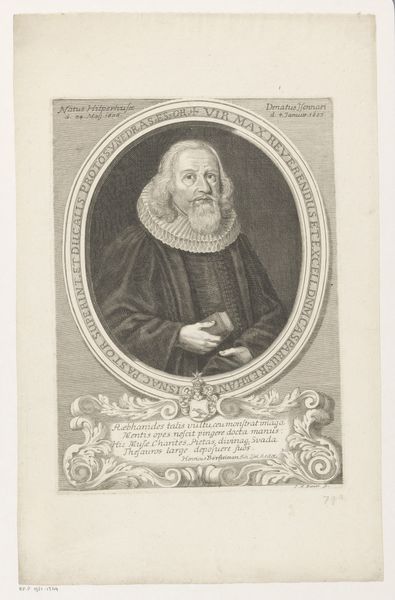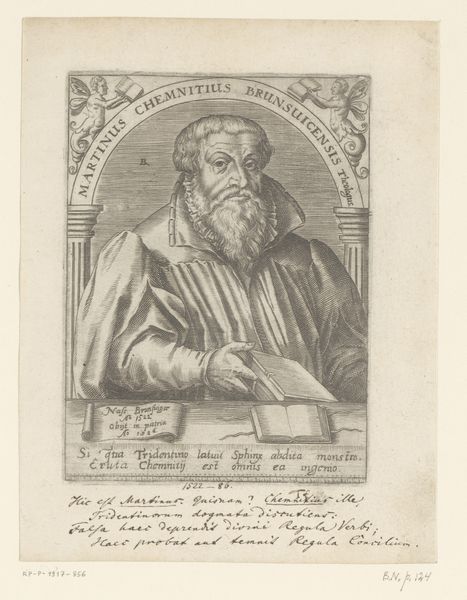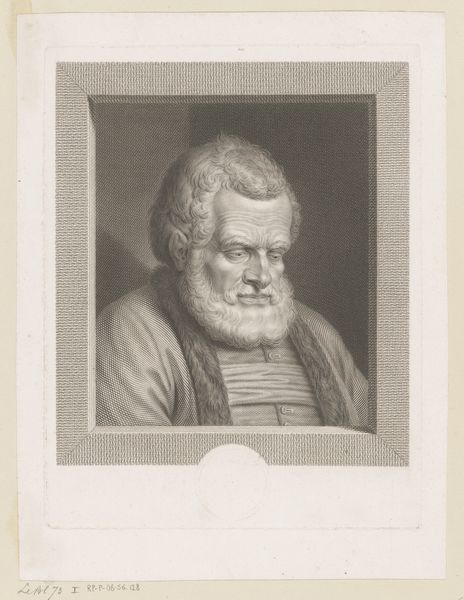
drawing, paper, ink, engraving
#
portrait
#
drawing
#
baroque
#
paper
#
ink
#
14_17th-century
#
portrait drawing
#
engraving
Copyright: Public Domain
Curator: So, this engraving on paper captures an old, bearded man. It’s called “Brustbild eines alten bärtigen Mannes,” attributed to Pieter Holsteyn the Younger, and currently held at the Städel Museum. It’s hard to pin down an exact date. Editor: The first thing that strikes me is how deeply melancholic the man's eyes appear, even in this fairly formal portrait setting. Almost like he’s peering through time. Curator: Well, think about the labor involved here. Each line meticulously etched, the physical effort required for such precision, turning metal and acid into image, a kind of material meditation if you will. Editor: And it’s all dedicated to capturing a feeling. The very slight droop of his mouth, the gentle wave of his beard – they become like stories themselves. Like visual whispers. Curator: The consumption aspect is fascinating too. Engravings facilitated the wide circulation of images. It’s like early social media for portraiture. But who bought this? Why? That speaks to status and cultural values. Editor: I like imagining him, maybe a local philosopher or even a weary sailor, captured for posterity. What does the artist and engraver feel about that process, too, and this exchange of art-for-patronage? I almost feel like I know him...or I at least want to write a story about what he knows! Curator: Indeed, the act of circulating this image normalizes certain ideas of the older man within the culture. How labor shapes identity is shown even in those circles the subject is in. And that stiff clothing suggests an ideal rather than lived realities. Editor: I wonder about the limitations of the medium. The engraving flattens reality to monochrome and linear textures, and also almost softens the truth. And what kind of story can one person hope to create for the sitter after a thousand iterations. Does the engraver have enough space for even the true story of one day in a person's life, even with a million meticulous marks? Curator: I think examining art as a tangible representation of cultural production broadens its meaning beyond subjective interpretation. This forces us to consider the mechanisms behind taste formation and power structures that enable artwork to gain traction, like art's physical availability as something consumed for status. Editor: And maybe looking that hard helps us pause and recognize the little miracles in even everyday existence. Maybe it opens up ways of questioning authority, so we have courage when staring back at these icons. Thanks for highlighting those ideas. Curator: My pleasure! Thanks for your poetic insight into history's working-class heroes.
Comments
No comments
Be the first to comment and join the conversation on the ultimate creative platform.
